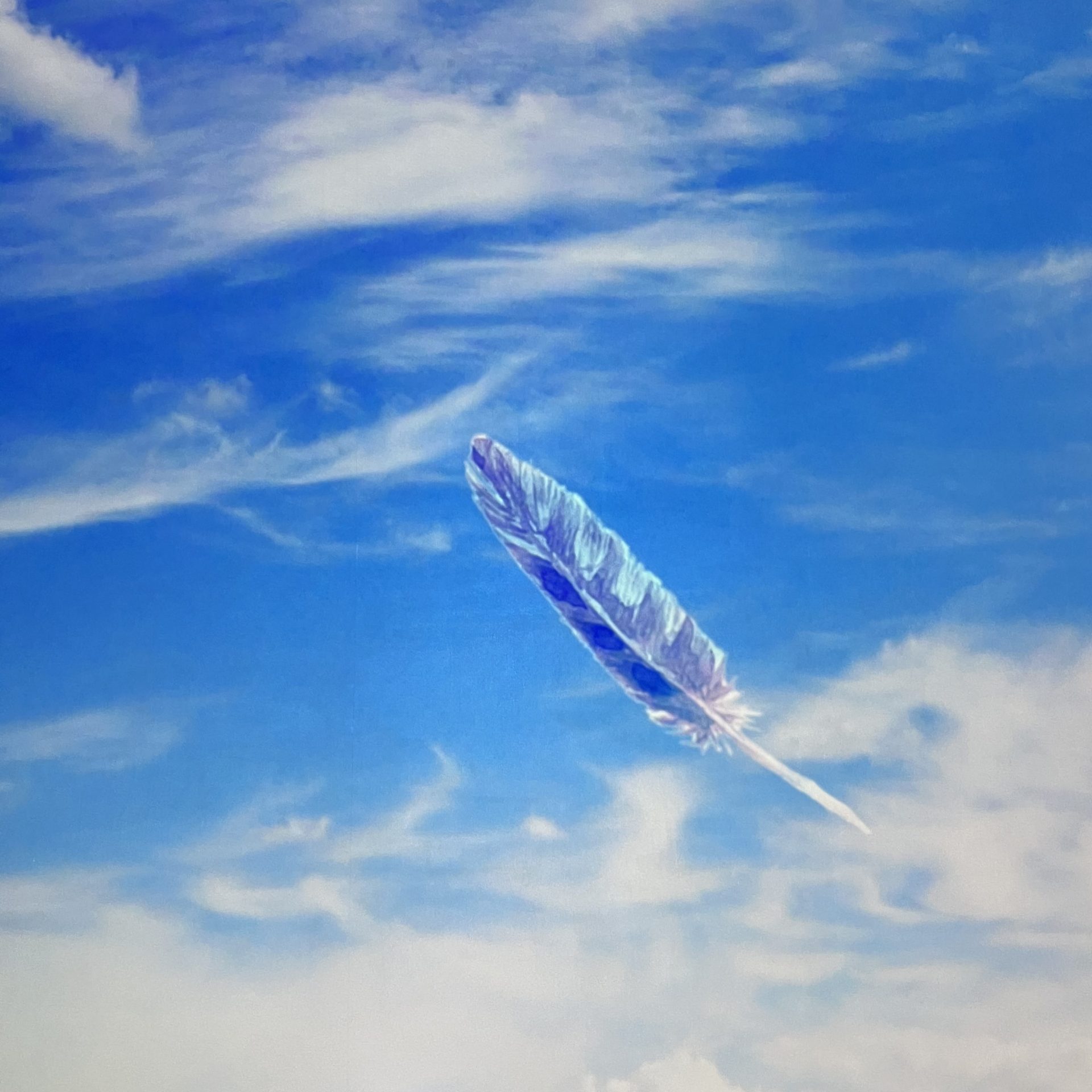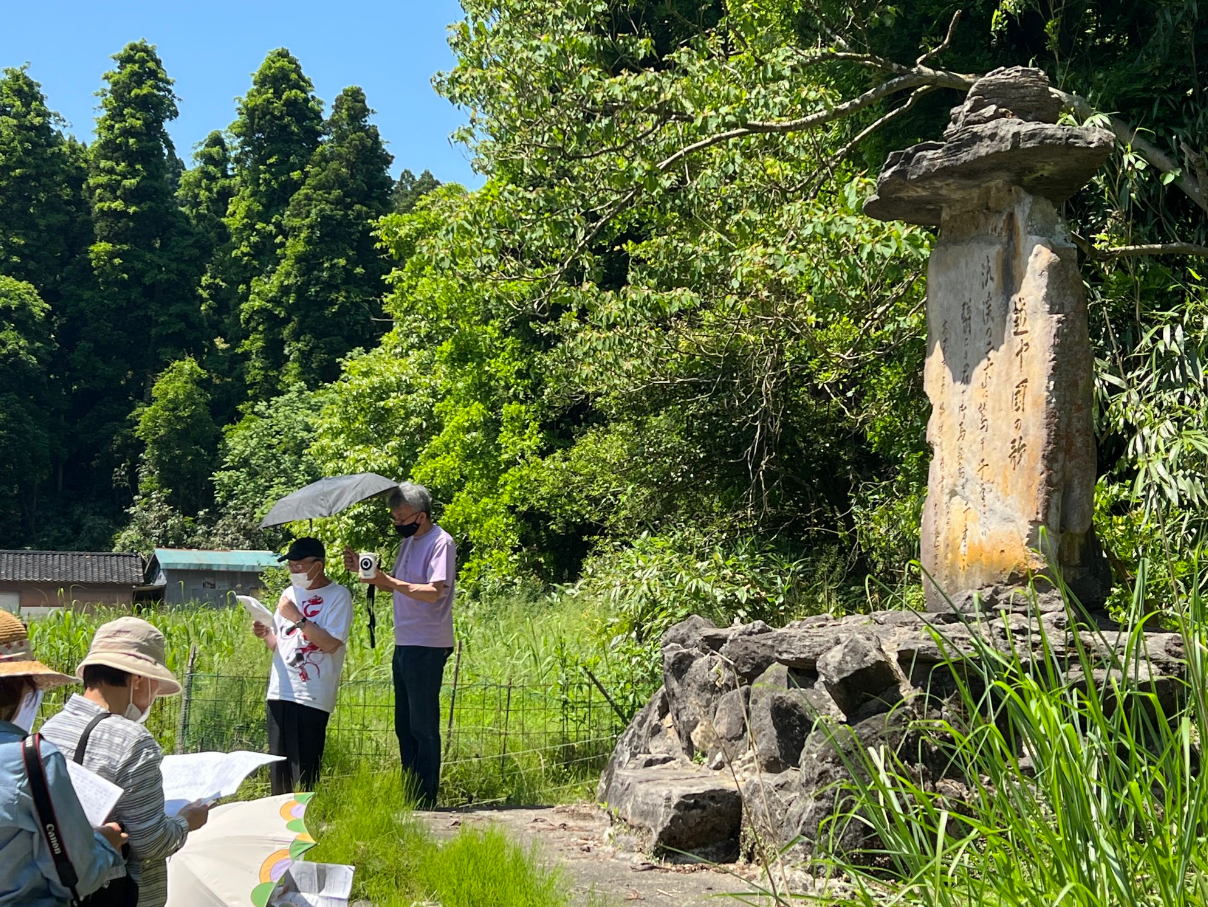歌碑20「二上山の鷲」-太田の湯への道の途中Monument No.20 “The Eagle of Mt. Futagami”-On the way to Ōta no yu
2022年09月19日

「渋谿(しぶたに)」は越中時代の大伴家持の歌にもたびたび登場(巻17・3954等)するように、越中国庁にほど近い海岸付近の地名。ただし、この歌で「二上山」にかかることからすると、広く二上山の裾野一帯を指す地名でもあったらしい。
(原画:佐竹美保、高岡市万葉歴史館「万葉体感エリア」プロジェクションマッピンク)
This is the second poem in the “Four Poems of Etchū” series. Shibutani, a coastal area near the provincial headquarters, is often mentioned in poems written by Ōtomo no Yakamochi during his time in Etchū (e.g., poem no. 3954). However, Mount Futagami is also mentioned in this poem, so it seems that the name “Shibutani” could also refer to the entire area around the mountain.
(Original picture: Miho SATAKE, Takaoka Manyo Historical Museum "Manyo Experience Area" Projection Map Pink)
![万葉歌めぐりの旅[Man'yōshū Literary Pilgrimage]](https://www.manreki.com/manyo-songs/images/common/pic_logo.svg)












解説
Commentary
二上山の鷲
The Eagle of Mt. Futagami
『万葉集』の3882番の歌。『万葉集』は、7世紀前半から8世紀後半にかけての約130年間の歌を収めた現存日本最古の歌集で、4500首余りの歌が収められている。この歌の作者は不明。題詞に「越中国の歌四首」とだけ記された歌群の第二首である。
「渋谿」は越中時代の大伴家持の歌にもたびたび登場(巻17・3954等)するように、越中国庁にほど近い海岸付近の地名。ただし、この歌で「二上山」にかかることからすると、広く二上山の裾野一帯を指す地名でもあったらしい。
「翳」は儀礼において貴人にさしかける柄の長い団扇のこと(下の画像:高松塚古墳壁画復元衣装)。その材料に鳥の羽根が使われたことから、「翳にも」は「翳の材料にでもなって」などと解されることが多い。だが、その解釈はやや即物的すぎるため、ここでは羽を広げた鷲の姿そのものを「翳」に見立てた表現と解釈した。あるいは、鷲が子を産み育てるため樹上に作った巣が長柄の団扇に似ていることから、「(巣を)翳のようにでもして」と解することも可能かもしれない。いずれにせよ、「翳」を喩えに用いていることを踏まえると、「君」は一定の地位にある者を指すと考えられる。
なお、この歌は5・7・7・5・7・7の旋頭歌である。前半と後半とは「鷲そ子産といふ」の表現を共有した、掛け合いのような構造をもつ。具体的にどのような状況の歌であるのかはよくわからないものの、窪田空穂『万葉集評釈』では「二上山に鷲の卵を見出したという珍しい噂の立った時、その国の何者かが、それを領主の瑞兆であるとして、その心をいったものである」とする。いずれにせよ、瑞祥を持ち出してこの地の有力者などを祝いだ、賀歌の類だろう。
高岡市太田の温泉施設「太田の湯」(閉業)へ続く道に歌碑が立つ。
(解説 ピーター・J・マクミラン)
高松塚古墳壁画の復元衣装(山口千代子制作)
Restored Costume of Mural Painting of Takamatsuzuka-kofun Tumulus
(Produced by Chiyoko YAMAGUCHI)
This is poem number 3882 of the Man’yōshū, the oldest existing collection of poetry in Japan. The Man’yōshū consists of over 4,500 poems and was compiled over a period of around 130 years, from the first part of the 7th century to the latter part of the 8th century. The author of this poem is unknown.
This is the second poem in the “Four Poems of Etchū” series. Shibutani, a coastal area near the provincial headquarters, is often mentioned in poems written by Ōtomo no Yakamochi during his time in Etchū (e.g., poem no. 3954). However, Mount Futagami is also mentioned in this poem, so it seems that the name “Shibutani” could also refer to the entire area around the mountain. Ritual fans (sashiba) were long fan-shaped ritual objects used by aristocrats. The reference to the fan in the original poem is not clear; this translation suggests that the eagle hatched her young so the birds could fan their lord with their wings in the same way an attendant would.
This poem is a sedōka with a 5-7-7-5-7-7 syllable pattern. It uses the phrase “it is said the eagle has given birth” in both the first and second halves, almost as if in a dialogue. It is not clear exactly what situation this poem describes. In Man’yōshū Hyōshaku [A Commentary on the Man’yōshū], Kubota Utsubo explains that “when a rumor spread that eagle’s eggs had been found on Mount Futagami, someone from that province said that it was an auspicious sign for the feudal lord. This poem expresses that feeling.” In any case, it is a celebratory poem (gaka) that celebrates a magnate of the region by associating him with an auspicious sign.
This waka stone monument stands on the road leading to the Ota no Yu hot spring resort in Ota, Takaoka City (currently closed).
(English Translation and Commentary by Peter Macmillan)